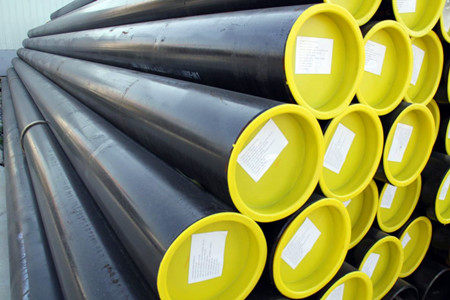When comparing API 5L Gr.B, ASTM A53 and ASTM A106 Gr.B steel pipe, it’s important to understand that they are both similar but have a few major differences. In this article, you will learn about the differences between the standards. We will cover the pressures for the inspection tests, the different processes for welded and seamless pipe, and the properties of the two types of pipe. Read on to learn more!
These specifications are made from carbon steel and are used for low-pressure plumbing. First of all, API 5L grade B pipe is equivalent to ASTM A106 Gr.B for onshore pipelines. The main difference between the two pipe grades is the chemical and mechanical strength of the material. While both pipes have similar chemical compositions, API 5L grade B is stronger. For ASTM A53 steel pipe, you can also choose between Type S (seamless) and Grade B (welded). A106 pipes are seamless, while A53 pipes are welded. The latter is characterized by higher temperatures and pressures than A53 pipes. The main difference is in the way the two types of pipe are produced. The former is a seamless product, while the latter is welded. Depending on the grade, they can either be seamless or welded. Although both types of pipes are able to withstand similar workloads, seamless pipes offer advantages over welded pipes. They are less susceptible to stresses because they do not have seams. This means that they can be shaped into precise shapes without a problem. While seamless pipes are generally more expensive, welded steel pipes are much more common in various industries, especially those requiring extreme pressure. Let’s begin with their chemical composition and property:
Chemical Requirement
| Standards | C, max % | Mn, max% | S, max % | P, max % | Si min % | Cr, max % | Cu, max % |
| A106 Gr. B | 0.30 | 0.29-1.06 | 0.035 | 0.035 | 0.10 | 0.40 | 0.40 |
| A53 Gr. B | 0.30 | 1.20 | 0.045 | 0.05 | 0.10 | 0.40 | 0.40 |
| API 5L Gr.B PSL1 | 0.28 | 1.20 | 0.030 | 0.030 | / | 0.50 | 0.50 |
Tensile Requirement
| Standards | Tensile Strength Mpa | Yield Strength Mpa | Elongation % |
| A106 Gr. B | ≥415 | ≥240 | 20 |
| A53 Gr. B | ≥415 | ≥240 | 20 |
| API 5L Gr.B PSL1 | ≥415 | ≥245 | 23 |
We can see the amount of carbon they contain varies. A53 pipes lack silicon, while A106 pipes contain it. Silicon increases the steel’s resistance to high temperatures. Because these pipes have different compositions, they have varying pressure and temperature ratings. The differences between the two types are not all that significant, however. You should be able to tell the difference between them if you need a certain pipe for a particular application. A106 requires cold drawn material that has been heat-treated to 1200 degrees Fahrenheit. A53 grade B and A106 grade B are different but have similar elongation values.
Inspection test pressures for ASTM A106 and ASTM A53 steel pipes vary. ASTM A106 is a seamless pipe, while ASTM A53 is a welded product. It is primarily used in low/medium-temperature applications. A106 is also compatible with structural steel and is more expensive than A53 pipes, but they have fewer restrictions and are often used for piping applications. Typically, seamless A106 pipes are used in high-temperature applications. A53 pipes are generally welded. Regardless of the type, they’re both excellent choices. For seamless steel pipe, ASTM A106 requires that the outside diameter of the pipe be at least 2 inches. This is a minimum size, but larger sizes are subjected to even higher pressures. For NPS 3 and larger sizes, these pressures are at 60% of the minimum yield strength.
Generally, API 5L grade B is the better choice when it comes to high-temperature applications. ASTM A106 is specifically designed for high-pressure and high-temperature service. It’s worth noting that both types of steel pipes are available in the seamless form, and you should make sure that you choose the one that is right for your project.







